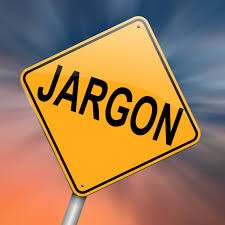
Apparently one of the things that most annoys marketers is jargon. At the recent Mumbrella 360 conference James Sykes, APAC marketing director of Beam Suntory, said:
We’re continually marginalising ourselves, because we talk [crap] most of the time. Most of what we say is meaningless, because fad words get in the way.
This comment is bang on, and one of the worst things about advertising, and particularly digital advertising – people using words that are designed to confuse rather than clarify. Because what then happens is some people start using these phrases without actually understanding them.
As an example, in a recent piece on AdAge, it was suggested that Procter & Gamble would be moving 70% of their digital media budgets to programmatic. The article then suggested that this was a massive leap for a brand advertiser because P&G “sells most of its products via retailers and needs more time and advanced analytics to know whether its digital ads are producing sales” and because “hitting its goal means getting publishers to make more premium inventory available for programmatic buying.”
There are two issues with these statements.
Firstly there is no indication of why buying media manually is likely to provide more insight into whether or not ads are driving sales. Because, realistically, that is all that programmatic means – the execution of tasks by machines instead of people, in this case choosing what media to buy and buying it.
If P&G have sophisticated attribution and modeling systems and processes (which, as the world’s largest advertiser, I’d imagine they do) moving to tools that can buy ad spots based on data will surely allow them to more directly tie their spend to their sales. It should also allow their staff and agencies more time to spend thinking about how to drive those sales even more, rather than having to make those buys manually.
Secondly the suggestion that it will be hard to get publishers to make inventory available is mistaken because it assumes that programmatic buying can only happen through exchanges alongside cheap remnant inventory. There is nothing to stop an advertiser like P&G doing a deal with a publisher which guarantees them access to inventory at agreed rates, but uses programmatic to execute the buys. In fact publishers are already doing this, in the shape of private marketplaces or what’s described as programmatic reserve.
This second misconception is linked to the idea that exchanges that are powered by auctions will result in lower yields, but that doesn’t necessarily hold true. The reason that houses in Australia are often sold at auction is because it generally drives the price up by unlocking the demand. Google’s cost per click have not gone down since they started and in fact there has been research which showed that auctions models such as those used to sell most of the inventory on Google & Facebook nearly always leads to inflation. Moving to auctions doesn’t necessarily mean that prices will go down – it does mean that they will get the price they deserve.
To tie this all back to Sykes’ original comment, as an industry we need to start being clear about what things do and don’t mean, and about how we can add value to their business. Buying media more efficiently should allow us more time to think about how to do that, rather than inventing or imagining reasons not to do so.